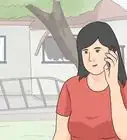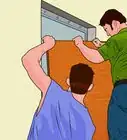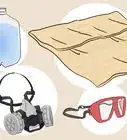wikiHow is a “wiki,” similar to Wikipedia, which means that many of our articles are co-written by multiple authors. To create this article, 127 people, some anonymous, worked to edit and improve it over time.
There are 9 references cited in this article, which can be found at the bottom of the page.
wikiHow marks an article as reader-approved once it receives enough positive feedback. This article received 28 testimonials and 85% of readers who voted found it helpful, earning it our reader-approved status.
This article has been viewed 883,800 times.
Learn more...
Lightning is a beautiful and inspiring phenomenon, but it can be deadly. Over the past 30 years, lightning has killed an average of 67 people per year in the United States alone. Fortunately, most lightning-related deaths are preventable. Follow these steps to safety the next time there’s fire in the sky.
Steps
Taking Shelter and Staying Safe
-
1Find shelter immediately. If you find yourself caught in a lightning storm, the key to minimizing danger is to get inside a protective structure. While most people seek shelter if lightning appears to be near, people commonly wait too long to seek shelter. If you can detect lightning, it may be close enough to strike you. Don’t wait for it to strike right next to you (or on top of you) to get to safety. Never stand under a tall or short tree, and avoid being close to power lines as they're both excellent conductors of electricity and could potentially cause death, if not serious injury. Find shelter near or under a stony shelter such as a cavern. [1]
- Substantial, frequently inhabited buildings (those grounded with plumbing, electrical systems, and, if possible, lightning rods) are best.
- If you can’t find a substantial structure, get in a car with a metal roof and sides. If the car is struck, the metal body will conduct the electricity around you, not through you. Make sure all windows are rolled up and doors are closed. Be careful not to lean against any metal -- if you do, the lightning will be conducted into your body if it strikes the car. Do not use the radio.
- Avoid small structures, such as stand-alone public restrooms. Open covering and rain shelters are also not suitable. These structures will attract lightning and provide no protection, making them more dangerous to be around.
- Standing under a tree is a very bad choice. Lightning strikes tall objects, and if the tree you are standing under is struck, you may be struck as well or injured by the tree.
- Bring in your pets. Doghouses and other pet shelters are not suitable protection against lightning strikes. A pet leashed to a fence has a much higher risk of getting struck by lightning.
-
2Stay away from windows. Keep windows closed, and try to stay within inner rooms of the structure. Windows provide a direct path for the lightning to travel.[2]Advertisement
-
3Don’t touch anything metal or electrical. Using a landline phone is the main cause of lightning-related injuries in the US. Lightning can travel into the home from through any material that conducts electricity. This includes landlines, electrical wiring, and plumbing.[3]
- Do not touch any electrical outlets during a storm. Do not unplug any devices during a lightning storm, as the strike could be transferred to you.
- Do not lie on concrete floors or lean against concrete walls. Most concrete has a wire mesh which can conduct electricity.
- Stay out of the bathtub or shower, and avoid indoor swimming pools.
- In a car, try to avoid touching any part of the metal frame or the car's glass.
-
4Stay inside. Stay inside at least 30 minutes after the last strike. Don’t go out just because the rain is starting to let up. There is still a significant risk of lightning strikes from a departing storm.
Surviving Thunderstorms Outside
-
1Minimize your risk. If you absolutely cannot reach shelter during a lightning storm, do everything you can to reduce your risk of being struck by lightning.[4]
- Move to a lower elevation. Lightning is much more likely to strike objects at higher elevations. Do what you can do get as low as possible.
- Avoid large open spaces where you are taller than anything else around you, like a golf course or soccer field.
- Stay away from isolated objects such as trees and light posts.
- Get away from unprotected vehicles, such as golf carts, and unprotected structures, such as picnic shelters. Avoid long metal structures, i.e. bleachers.
-
2Get out of the water. If you are fishing or swimming, get out of the water immediately, and move away from the body of water. Being near water is extremely dangerous during a lightning storm.[5]
-
3Spread out.[6] If you are caught in a lightning storm with a group of people, maintain a distance of at least 50–100 feet (15.2–30.5 m) between each person. This will reduce the risk of lightning traveling from one person to another.
- Take a headcount after every close strike. This will ensure that anyone struck will get emergency attention quickly.
-
4Remove your backpack. If you are hiking with a metal frame backpack, remove it as soon as you detect lightning. Make sure to leave it at least 100 feet (30.5 m) from wherever you are taking shelter.[7]
-
5Assume the “lightning crouch”. Squat down with your feet together, your head tucked to your chest or between your knees, and your hands covering your ears or flat against your knees. Do not lie flat on the ground, as this gives the lightning a larger target.[8]
- This is a difficult position to hold, and it definitely doesn't guarantee your safety. However, by making it easier for a lightning strike to flow over your body rather than through vital organs, you may be able to sustain a smaller injury from it.
- Cover your ears and close your eyes to protect against nearby thunder and bright lightning flashes.
-
6Be alert for an imminent lightning strike. If lightning is about to strike you or strike near you, your hair may stand on end, or you may feel a tingling in your skin. Light metal objects may vibrate, and you may hear a crackling sound or "kee kee" sound. If you detect any of these signals, assume the lightning crouch immediately.
-
7Wear rubber boots. They are made of a material which is a bad electrical conductor.
Taking Precautions
-
1Plan ahead. The best way to avoid injury from a lightning storm is to avoid it completely. Make your plans with dangerous weather in mind. Listen to the local weather forecast, and pay special attention to thunderstorm advisories.[9]
- Research the local climate: in some areas you can almost guarantee a thunderstorm on summer afternoons. Schedule your activities to avoid many high-risk situations. Those hot, muggy days are just the thing that a thunderstorm needs to get going.[10]
-
2Watch the skies. When you’re out and about, watch the sky for signs of approaching thunderstorms, such as rain, darkening skies, or towering cumulonimbus clouds. If you can anticipate lightning before the first strike, you can avoid being caught in a bad situation.
- Note that lightning can, however, strike even in the absence of these indicators.
-
3Calculate the distance to the lightning. If conditions permit good visibility, and it’s not practical to seek shelter whenever you notice a strike, use the 30 second rule: if the time between a lightning flash and the resulting thunder is 30 seconds or less (aka 6 miles (9.7 km) or less), get to shelter immediately.[11]
-
4Plan your response. If you are in an area that you expect will see lightning storms, know where safe shelters are. Communicate your plans to your group so that everyone knows what to do in an emergency.
-
5Prepare an emergency kit. Be ready with first aid and other disaster essentials. You may lose power during a thunderstorm, so have alternative light sources available.
-
6Install a lightning rod. If you live in a lightning-prone area, installing a lightning rod can help protect your family and your property.
- Have your lightning rod professionally installed. An incorrectly installed rod can increase the chance of a lightning strike.
Treating Lightning Strike Victims
-
1Call emergency services. Because lightning strikes can cause cardiac arrest, aggressive resuscitation may be necessary. If you cannot dial 9-1-1, designate someone else to.[12]
-
2Make sure it is safe to help. Do not put yourself in danger trying to help a lightning strike victim. Either wait until the immediate danger has passed, or move the victim to a safer location.
- Despite the common myth, lightning can strike the same place twice.
-
3Start CPR. People struck by lightning do not retain an electrical charge, so you can immediately touch them and begin treatment.[13] Do not remove the burned clothes unless absolutely necessary.
- Perform Child CPR if the victim is a child.
- Perform Adult CPR on adult victims.
-
4Treat the victim for shock. Lay the victim down on his or her back with the head resting slightly lower than the torso. Elevate and support the legs.[14]
Community Q&A
-
QuestionWhere can I be if my house has a lot of windows?
 Community AnswerYou should just be in the middle of your room. As long as you aren't standing directly next to the window, don't worry about it.
Community AnswerYou should just be in the middle of your room. As long as you aren't standing directly next to the window, don't worry about it. -
QuestionWhy is it safest to be in the lowest part of a house during a thunderstorm?
 Community AnswerBecause it gives you less of a chance of getting hit by lightning. If you are inside, it is still necessary to take precautions.
Community AnswerBecause it gives you less of a chance of getting hit by lightning. If you are inside, it is still necessary to take precautions. -
QuestionCan I use wireless electronics, like my tablet?
 Community AnswerYes, but keep it unplugged. If your house is struck by lightning, not only can you get struck, but if it strikes the house, your tablet could sustain damage.
Community AnswerYes, but keep it unplugged. If your house is struck by lightning, not only can you get struck, but if it strikes the house, your tablet could sustain damage.
Warnings
- When seeking lower ground, try to choose an area that is safe from flooding.⧼thumbs_response⧽
- Do not attempt to watch a storm through an open window or door or from a porch. Unenclosed areas are not safe, even if in a suitable shelter.⧼thumbs_response⧽
- Severe thunderstorms can (and sometimes do) produce tornadoes with little or no warning. *Keep alert for potentially life-threatening weather if the storm(s) in the area are particularly strong. Stay alert even if there were no thunderstorm warnings issued.⧼thumbs_response⧽
- Do not touch someone if they are being electrocuted (unless using non-conductible materials like wood, plastic, rubber, etc.).⧼thumbs_response⧽
References
- ↑ http://www.ready.gov/thunderstorms-lightning
- ↑ http://www.thorntonweather.com/blog/education/indoor-lightning-safety-staying-safe-in-your-home-or-office/
- ↑ http://www.thorntonweather.com/blog/education/indoor-lightning-safety-staying-safe-in-your-home-or-office/
- ↑ https://www.accuweather.com/en/weather-news/7-lightning-safety-tips-if-youre-caught-outside-during-a-thunderstorm/70002014
- ↑ https://www.accuweather.com/en/weather-news/7-lightning-safety-tips-if-youre-caught-outside-during-a-thunderstorm/70002014
- ↑ https://www.cdc.gov/disasters/lightning/safetytips.html
- ↑ http://www.hikingdude.com/hiking-lightning.php
- ↑ https://www.cdc.gov/disasters/lightning/safetytips.html
- ↑ https://www.cdc.gov/disasters/lightning/safetytips.html
- ↑ http://www.nws.noaa.gov/
- ↑ http://www.hikingdude.com/hiking-lightning.php
- ↑ https://www.redcross.org/get-help/how-to-prepare-for-emergencies/types-of-emergencies/thunderstorm.html
- ↑ https://www.redcross.org/get-help/how-to-prepare-for-emergencies/types-of-emergencies/thunderstorm.html
- ↑ http://firstaid.webmd.com/lightning-strike-treatment
About This Article
To protect yourself in a thunderstorm, seek shelter in a building like a house or shop. If you can't, take shelter in a car with metal sides, since if it's struck by lightning the electricity will be conducted through the metal. In a situation where you can't get inside, find an area of low elevation to reduce the likelihood of a lightning strike. You should also remove your backpack as many backpacks contain metal, and assume the "lightning crouch" by tucking your head against your chest, bending your knees, and putting your arms around your knees. To learn how to take precautions and avoid a lightning storm, read on!
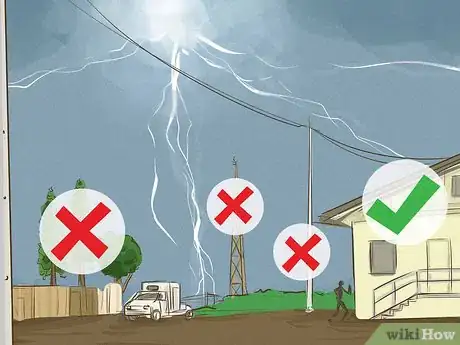
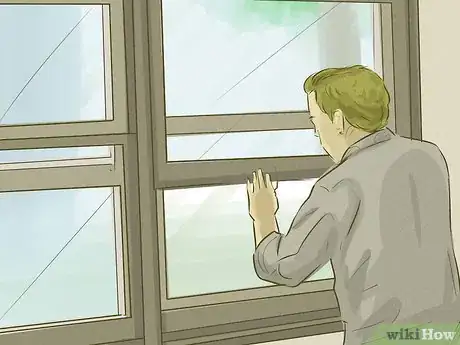
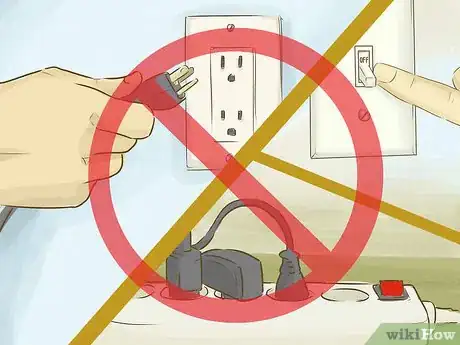
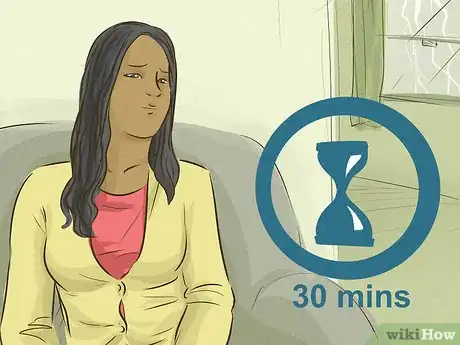
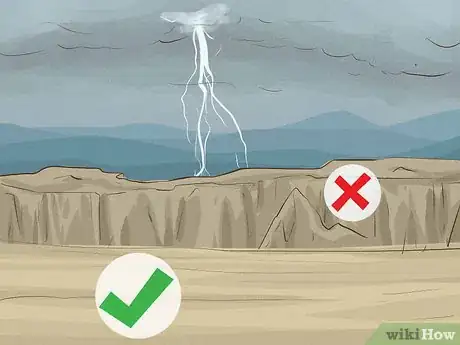

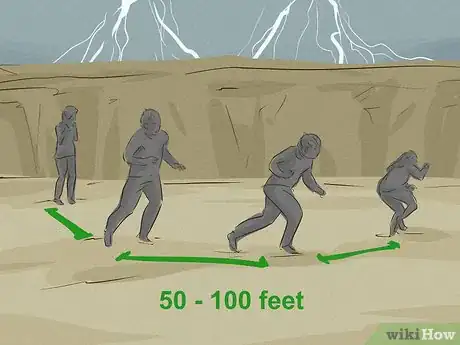
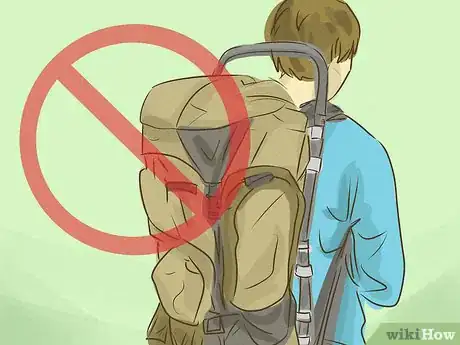
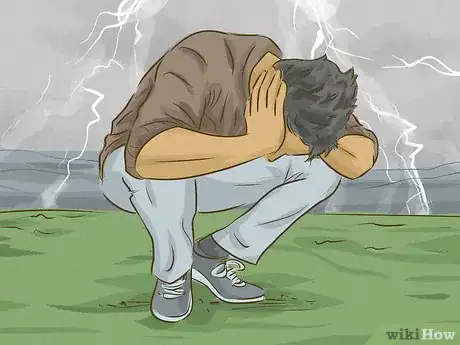
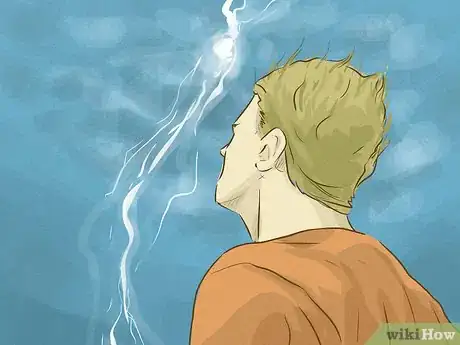
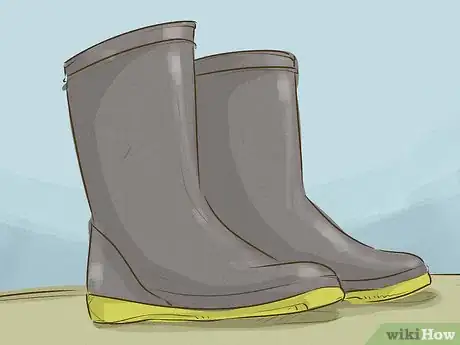
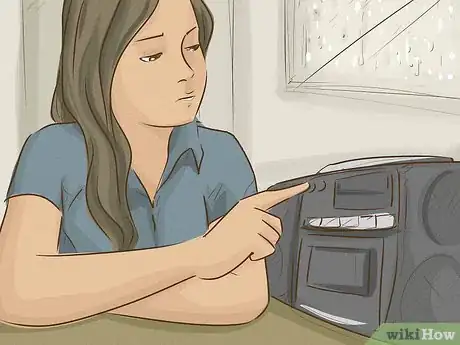

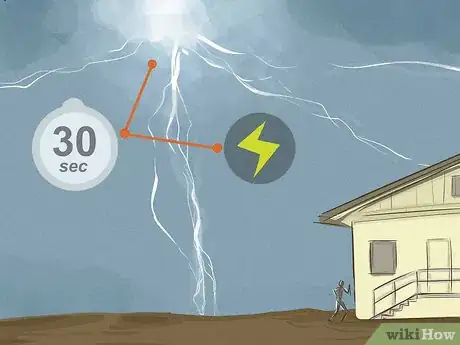
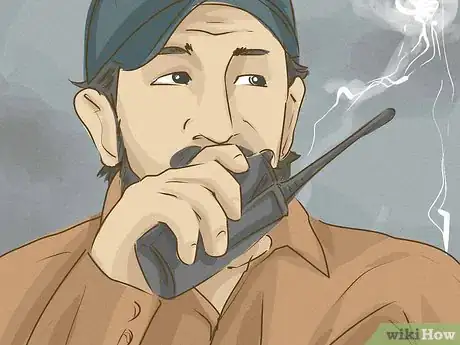
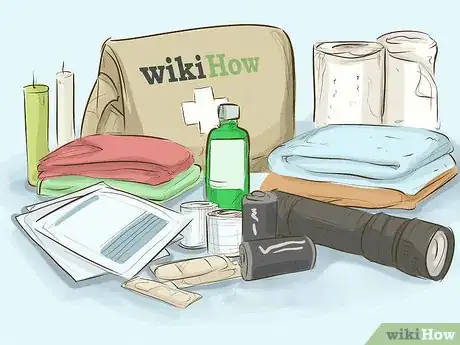
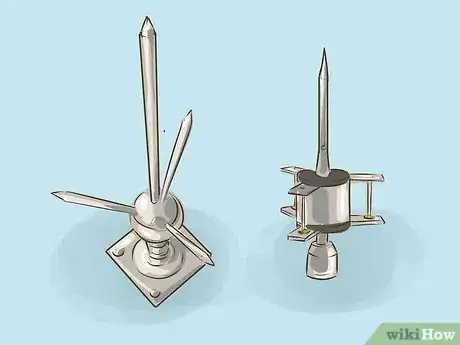
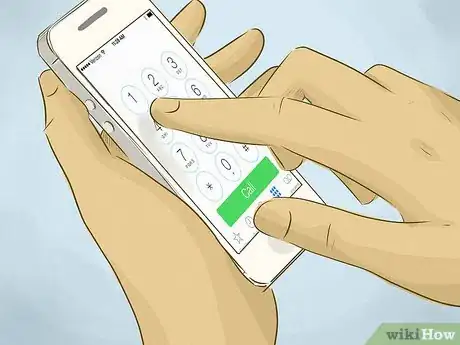

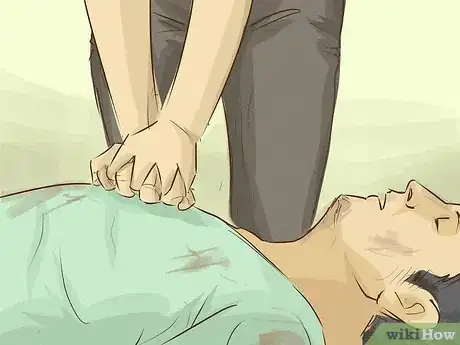

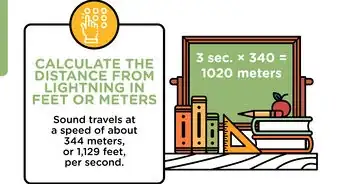
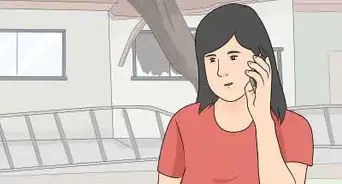

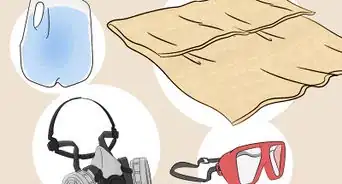

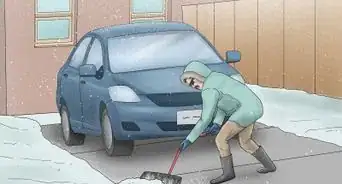
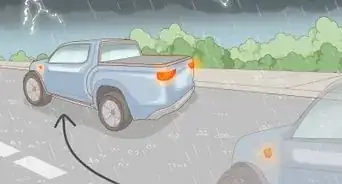
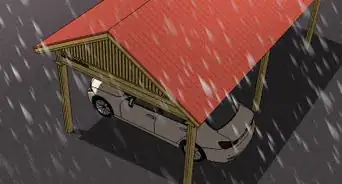
-Step-13.webp)
















